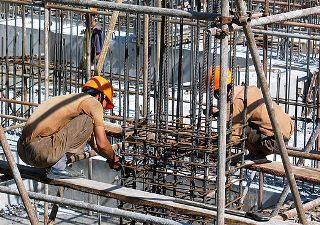 The year 2015 is expected to build upon the fragile economic recovery made in 2014 and continue to see stronger box shipping demand on East-West trades, according to BIMCO, even as it notes that the tentative steps made in world trade need more political push to improve their pace.
The year 2015 is expected to build upon the fragile economic recovery made in 2014 and continue to see stronger box shipping demand on East-West trades, according to BIMCO, even as it notes that the tentative steps made in world trade need more political push to improve their pace.
Unlike expectations at the start of 2014, developing and emerging markets went on a downward trend last year, said the industry group, while the U.S. and Europe had steadier performances that “had the effect of moving the already more advanced economies forward.”
In 2015, however, BIMCO expects emerging markets and developing economies to make a comeback, with GDP growth improving from 4.4% in 2014 to 5%. “The advanced economies are likely to stay on the recovery track, and improve their GDP growth to 2.3% in 2015 (1.8% in 2014).”
The common challenges remain poor inflation expectations, a lack of structural reforms, and lack of job creation. “There is clearly room for more political initiatives in 2015 to support the global economy,” said BIMCO.
On the shipping front, the organization expects container ship supply to continue to grow at its “new normal” level of around 6%, making the demand side a focal point.
“European demand has been stronger than private consumption figures indicated, and we may well see further improvement for U.S. demand. The U.S. East Coast could build further on a remarkable year as the ports prepare for the imminent arrival of ultra-large container ships. Enlargement projects in the Panama Canal and Suez Canal will further influence the deployment of ships,” BIMCO said.
Looking back, it noted how strong demand growth on the large-volume trades from the Far East to U.S. and Europe has brought lower volatility in freight rates on key trades while reactivating most of the previously idle ships.
However, during peak season, the steep drop in freight rates on the Far East to Europe trade lane “made it clear that the utmost care is constantly required for the supply side, while the introduction of ever-larger ships continues.”
“Improved industry earnings currently rest on one central requirement: slow steaming and defense of individual market share. This highly competitive market only returns a positive margin if the cost base is extremely low,” it added.
As for newbuild orders in 2014, there was no change in the total orderbook for the year. This, said BIMCO, “signals that the industry is now realizing that more new orders may not be the right thing to do after all.”
The fundamental oversupply of capacity in all of the major shipping segments has not changed much over the past year. A higher level of demand has only just matched the net supply of new tonnage coming on stream.
The group also pointed to the trend toward bigger container ships, “breaking previous size records for both individual ships and the average size across the fleet.” The CSCL Globe, with a capacity of 19,000 TEUs (twenty-foot-equivalent units), was launched in November, and the average TEU capacity of a 2014 newbuild increased to 7,400 TEUs, up from 6,600s TEUs in 2013. Next year the scheduled average is 8,000 TEUs.
Photo: National Institute for Occupational Safety and Health




